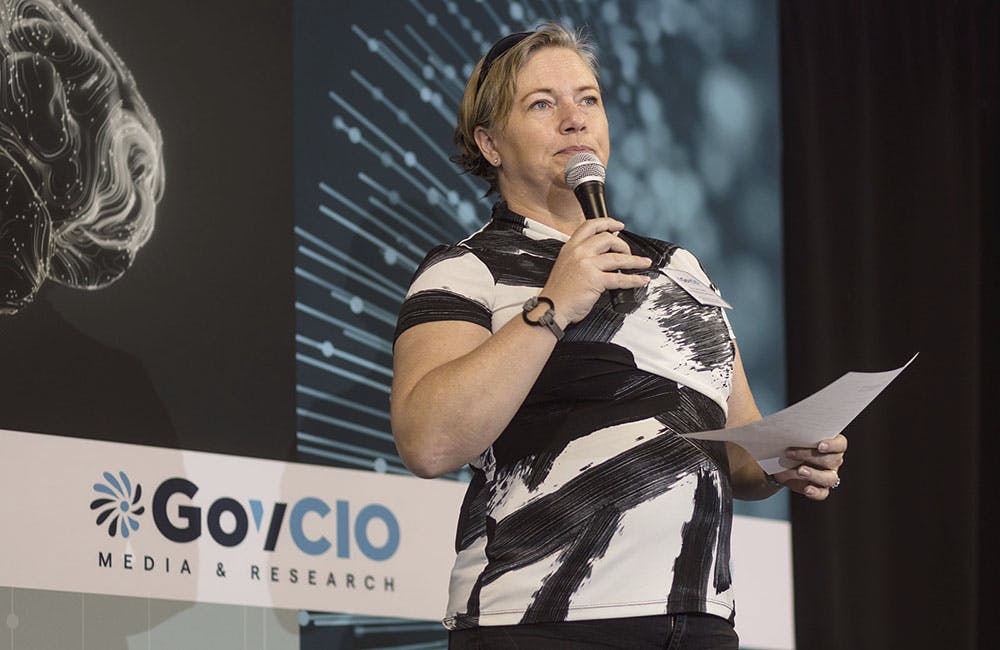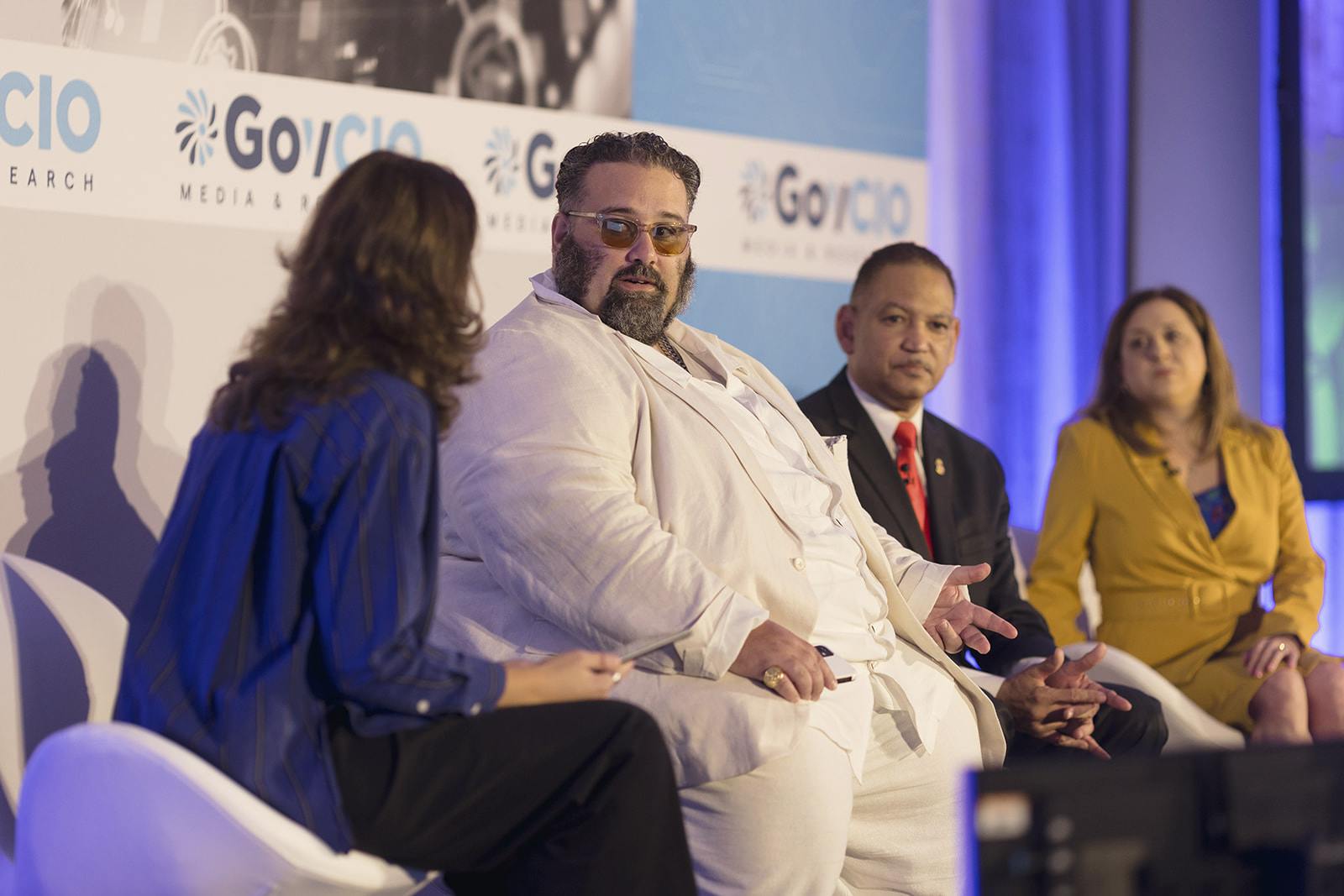Pandemic Next Steps Include Universal Coronavirus Vaccine, Expanded At-Home Testing
Federal health officials outline new and ongoing efforts to combat COVID-19 as omicron variant surges.

Federal agencies are focusing on developing a pan-coronavirus vaccine, sending Americans free at-home testing kits, and doubling down on booster shots and therapeutics as the country faces unprecedented rates of new COVID-19 cases.
Top federal health officials shared multi-pronged priorities before a Senate committee hearing Jan. 11 amid the rise of omicron COVID-19 variant, highlighting the importance of expanding testing, as well as developing and rolling out improved vaccinations and therapies to handle new challenges emerging from the pandemic.
National Institute of Allergies and Infectious Diseases Director Dr. Anthony Fauci emphasized that there is evidence that a booster shot following a primary vaccine series “significantly reconstitutes and enhances the ability of antibodies from boosted individuals to neutralize the omicron variant” and that NIAID is supporting efforts to develop a universal or pan-coronavirus vaccination.
Fauci said that NIAID has awarded funding to research the creation of a pan-coronavirus vaccine, which he added will at least address all SARS CoV-2 variants and hopefully all coronaviruses. He stressed that with the continual emergence of new variants, this universal coronavirus vaccine will rise as a key milestone in overcoming the pandemic.
“NIAID has issued new awards to fund pan-coronavirus vaccines at four academic institutions,” Fauci said. “These awards will fund multi-disciplinary collaborative teams to conduct research focused on coronavirus virology and immunology, image and design, and innovative vaccine and adjuvant platforms, as well as technologies to discover, design and develop pan-coronavirus vaccine candidates.”
While research to develop a pan-coronavirus vaccine begins, health agencies are pushing for more near-term solutions. The White House is aiming to acquire 500 million at-home COVID-19 tests to make available for Americans starting at the end of January.
“We’re in the process of procuring the 500 million tests which every American household will be able to order and have shipped directly to their house,” Assistant Secretary for Preparedness and Response Dawn O’Connell said. “We have completed four contracts so far, have secured 50 million tests and are in the process of securing the additional tests over the next several days. The U.S. Postal Service has agreed to do the distribution and the U.S. Digital Service is going to help with the website.”
To help ramp up further testing, the Food and Drug Administration and National Institutes of Health have partnered to streamline validation and authorization of antigen tests through the Independent Test Assessment Program (ITAP), FDA Acting Commissioner Dr. Janet Woodcock said.
ITAP also aims to accelerate emergency use authorization (EUA) review times of testing solutions to bring more testing options to American communities.
“We expect shorter review times for EUA requests due to our partnership with ITAP,” Woodcock said. “In fact, the first two tests that participated in this program were authorized in two days or less from the time FDA received the final date, so this is a very good model for government assistance of diagnostic manufacturers. In this new program, ITAP will prioritize new over-the-counter test submissions that can be manufactured at significant scale to accelerate the availability of high-quality, accurate and reliable tasks for the public as quickly as possible.”
Support behind COVID-19 therapeutics will also remain a critical piece for the federal response to the latest stage of the pandemic. FDA recently authorized EUAs of new therapies such as Paxlovid, and Woodcock said that further expansion of therapeutic treatments will be essential as new variants of the virus emerge.
O’Connell added that ASPR has been and will continue to expand COVID-19 therapeutic treatments, from monoclonal antibodies to antiviral pills. She testified that ASPR is on track to make 250,000 courses of GSK monoclonal therapy and nearly half a million preemptive AstraZeneca monoclonal treatments for at-risk individuals available by the end of this month. ASPR is currently procuring antiviral pills to further bolster therapeutic options.
“We now have antivirals by Pfizer and Merck that are effective against Omicron and are being delivered to states free of charge every other week,” O’Connell said. “We have secured 3.1 million courses of Merck that are now available. Last week we doubled our commitment to order 20 million courses of Pfizer’s product. We have 265,000 courses available throughout this month and anticipate delivering the first 10 million courses to states by mid-summer.”
While these efforts are underway, Fauci, Woodcock, O’Connell and CDC Director Dr. Rochelle Walensky emphasized that receiving a booster vaccination is one of the nearest term protections for individuals amid the omicron surge.
The CDC recently expanded eligibility of booster doses to individuals 12 to 15 years old and shortened the recommended window between receiving a primarily vaccination series and booster shot from six to five months. CDC also recently updated quarantine guidance for individuals who test positive for COVID-19.
“For people who tested positive for COVID-19, CDC recommends isolation for five days if you’re asymptomatic or if your symptoms are resolving,” Walensky said. “However, you should continue to wear a well-fitting mask at all times when around others, including at home and in public for an additional five days. We recommend that you avoid activities where you are unable to wear a mask and that you avoid travel for the full 10 days.”
Walensky added that CDC changed the recommended duration for quarantine to five days for individuals who come in contact with someone with COVID-19 and should get tested on the fifth day if they do not develop symptoms.
“If you test positive you should begin isolation,” Walensky explained. “People who test negative may end quarantine and continue to wear a well-fitting mask when around others for an additional five days. These recommendations are consistent with over 100 studies collected over the past two years, indicating that people are most infectious during their first few days of infection and significantly less infectious six to 10 days after infection.”
This is a carousel with manually rotating slides. Use Next and Previous buttons to navigate or jump to a slide with the slide dots
-

VA CIO Targets Modern IT and Smarter Workforce Alignment
Agency leaders told lawmakers they are focused on trimming legacy systems and restructuring its workforce to streamline operations.
3m read -

Pentagon's $200M AI Contracts Signal Broader Effort to Transform Talent
The Army is leveraging Silicon Valley, reservist programs and new hiring strategies to integrate critical digital skills in its ranks.
5m read -

AI Foundations Driving Government Efficiency
Federal agencies are modernizing systems, managing risk and building trust to scale responsible AI and drive government efficiency.
43m watch -

Inside DOD’s Push to Grow the Cyber Workforce Through Academia
Diba Hadi gives her first interview since becoming principal director of the DOD’s Cyber Academic Engagement Office.
15m listen -

Agencies Tackle Infrastructure Challenges to Drive AI Adoption
Federal agencies are rethinking data strategies and IT modernization to drive mission impact and operational efficiency as new presidential directives guide next steps.
5m read Partner Content -

Generative AI Demands Federal Workforce Readiness, Officials Say
NASA and DOI outline new generative AI use cases and stress that successful AI adoption depends on strong change management.
6m read -

The Next AI Wave Requires Stronger Cyber Defenses, Data Management
IT officials warn of new vulnerabilities posed by AI as agencies continue to leverage the tech to boost operational efficiency.
5m read -

Federal CIOs Push for ROI-Focused Modernization to Advance Mission Goals
CIOs focus on return on investment, data governance and application modernization to drive mission outcomes as agencies adopt new tech tools.
4m read -

Fed Efficiency Drive Includes Code-Sharing Law, Metahumans
By reusing existing code instead of rewriting it, agencies could dramatically cut costs under the soon-to-be-enacted SHARE IT Act.
5m read -

Agencies Push Data-Driven Acquisition Reforms to Boost Efficiency
New initiatives aim to increase visibility of agency spending, improve data quality and create avenues to deploy solutions across government.
5m read -

Data Transparency Essential to Government Reform, Rep. Sessions Says
Co-Chair of the Congressional DOGE Caucus Rep. Pete Sessions calls for data sharing and partnerships to reduce waste and improve efficiency.
5m read -

DOD Turns to Skills-Based Hiring to Build Next-Gen Cyber Workforce
Mark Gorak discusses DOD’s efforts to build a diverse cyber workforce, including skills-based hiring and partnerships with over 480 schools.
20m listen
















